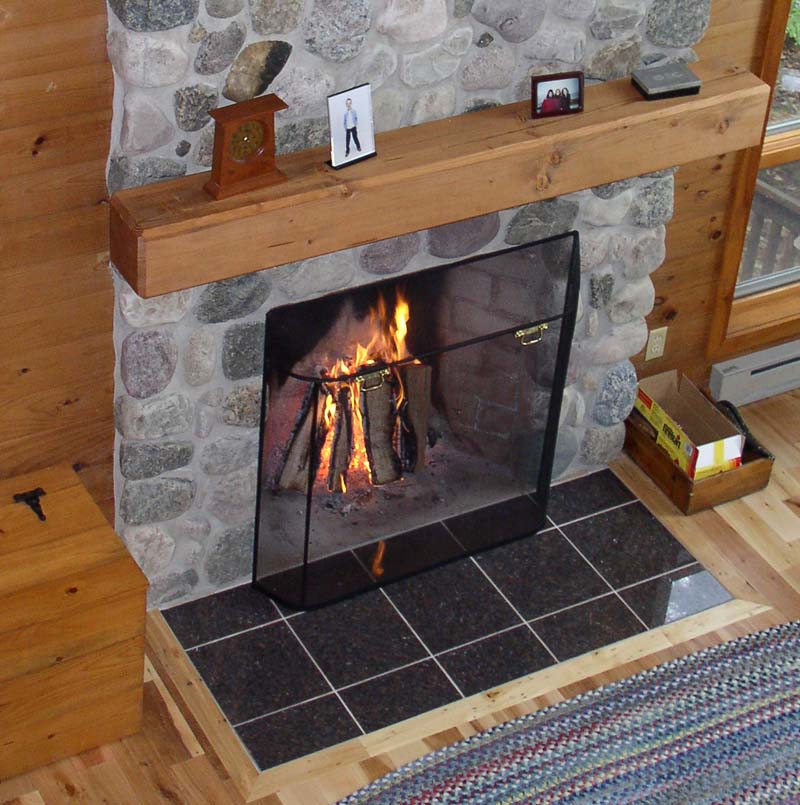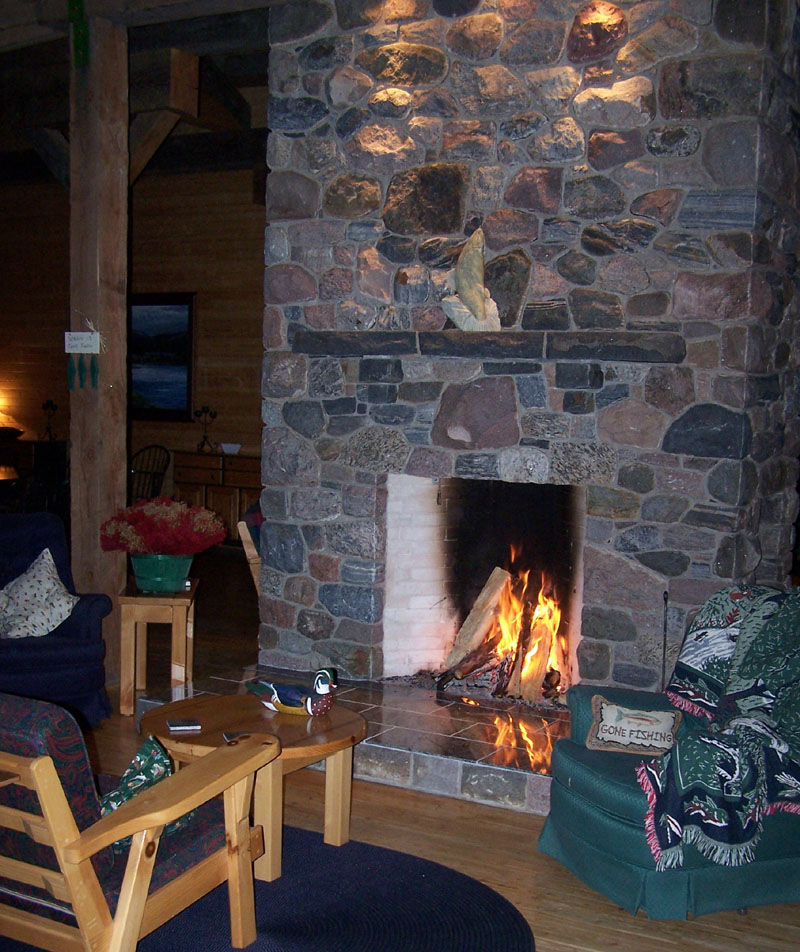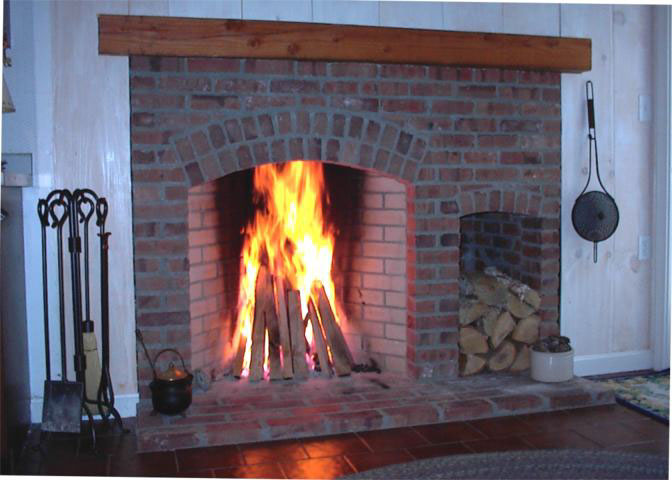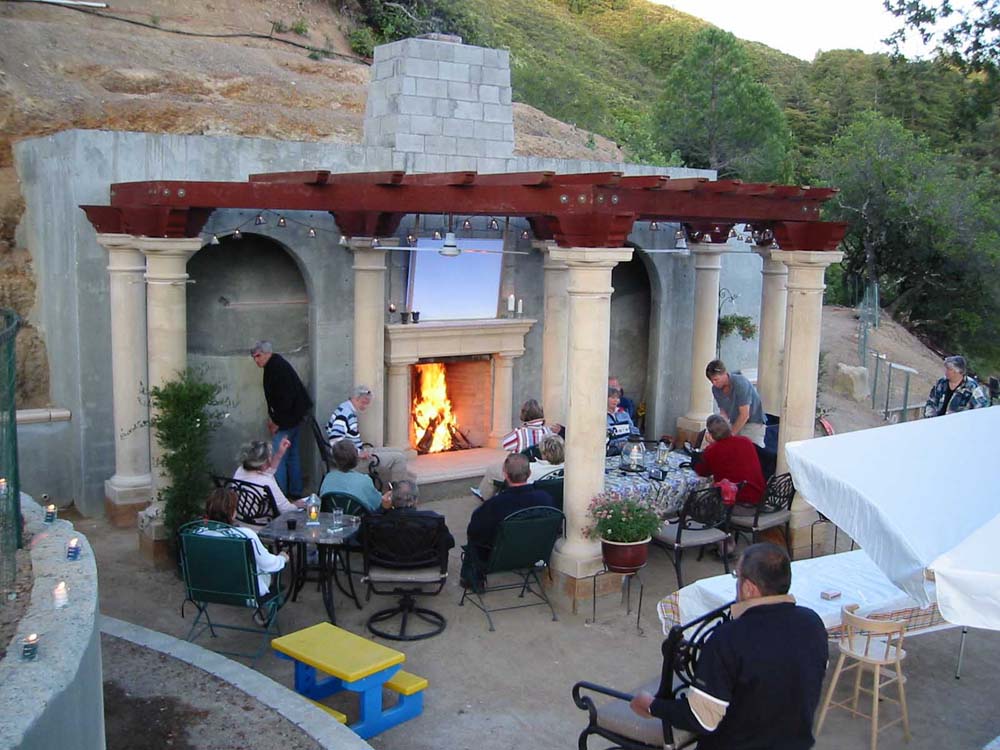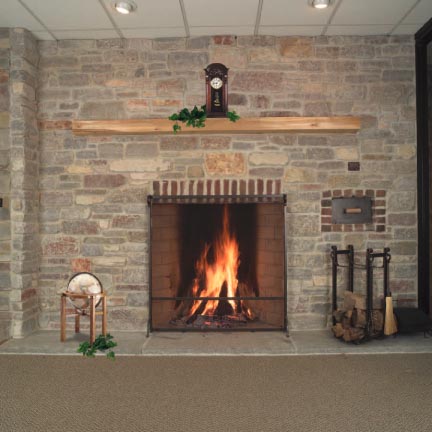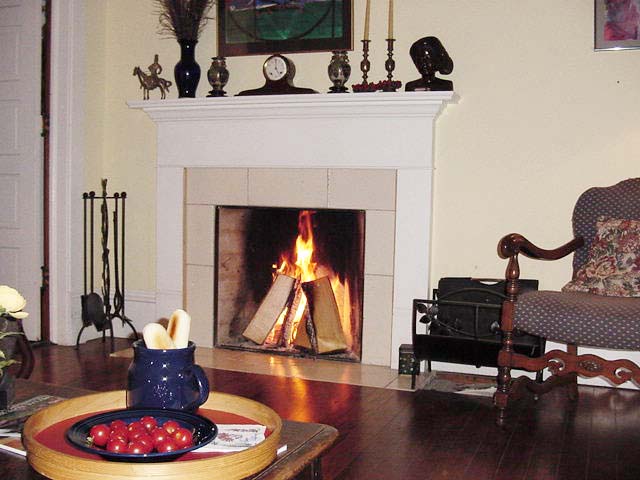
|
Buckley Rumford Fireplaces Building a Fire in Your Rumford Fireplace by Jim Buckley, 9/22/08
|
|
Rumford fireplaces are known to be efficient and clean-burning. They were developed by Rumford in the late 18th century to save fuel and clean up the air in London. Our ancestors who heated with fireplaces soon learned how to build good fires but we moderns have had to learn those lessons over again. Build big enough fires. Fireplaces have only one optimum burn rate and it is a little more vigorous than we have become used to in merely decorative fireplaces. Notice the fires in the pictures on this page and see that the flames fill the firebox and burns off the soot in the lower half to two thirds of the firebox. If your Rumford is fitted with glass or metal doors, open them, or lift them off their hinges and put them aside. The doors are fine for closing off the fireplace when you're not using it but they block most of the radiant heat from the fireplace. We tested the Buckley Rumford fireplace with the doors closed and without doors. It easily passed the emissions test both ways - and it heated much better without the doors. Use well seasoned hardwood. Any wood fire needs three to five logs to maintain combustion. Fewer, bigger logs can be used if the wood is well seasoned. Many of our Rumford fireplaces are quite large, but even in our smallest Rumford, 20" logs will fit standing up on end. Build tall tipi fires. Rumfords are tall fireplaces so take advantage by building tall fires. Stand the logs on end against the fireback, tipi style. This raises the fire and more nearly fills the tall Rumford firebox with fire to maximize the radiant heat output. A tall fire burns cleaner. By keeping the smoke and products of combustion in the flame and hot longer, more of it burns up and the fireplace produces little smoke and little pollution. Laying the fire, pin a sheet of newspaper against the fireback with some long sticks of kindling. Surround the newspaper with at least six or seven pieces of kindling 16" to 20" long and about 1" in diameter. Lean four or five logs on end against this cylinder of kindling, all pointing up toward the center of the throat, like a tipi. No grate is needed with a Buckley Rumford fireplace. You can build a fire right on the hearth. In fact the fire burns cleaner if you do.
|
Open the damper and light the fire. Light a sheet of newspaper on top of the fire to heat up the flue and get the air in it going up. Light the newspaper inside the bundle of kindling at the top. The flame at the top of the fire burns up the smoke. As the fire burns down through the kindling adjust the logs and add
more as needed standing on end and leaning against the fire or the fireback. You might have to add more newspaper on top of the fire or even poke some under the kindling to get it going. Keep the fire blazing. Don't be afraid of a brisk fire. You have a fireplace that can take it. Besides, hot fires burn efficiently, burning off most of the volatile gases driven from the wood and minimizing the build-up of creosote in the chimney. After a few minutes adjust the logs so the fire is stable, and add another log or two on end, leaning against the fireback. The tall tipi style fire is surprisingly stable, falling in on itself as it burns, it rarely needs tending. Enjoy! If you leave the room, put a good full screen in front of the fire, but if you're paying any attention at all, it's warmer and much more cheery to enjoy the fire without a screen. You can adjust the heat of the fireplace by the wood you select. Fewer, larger logs will burn more slowly and put out less heat than the same amount of wood split smaller. Add two logs and put up the screen when you go to bed at night. The fireplace will continue to heat all night and by morning the firebox will still be hot but the fire will be out and you can close the damper or doors - or rekindle the fire. You're doing everything right if, after a few fires, the bottom half of the firebox has burned clean. There will be some smoke stains up higher where it's cooler but, if the firebricks near the fire are burned clean, it means your fires are hot enough. If not, check the quality of your wood and/or split it smaller. After each season you should clean the flue by running a special flue-cleaning brush through it several times. You should get only about a cup of soot out of the flue and know that it really didn't need cleaning. While you're at it, make sure the damper works properly. 100 years ago you would have whitewashed the firebox and put flowers in it for the summer.
|

[Certified Core]
[Plan]
[Instructions]
[Building a Fire]
[Registration & Warranty]
[Test Results]
Comments
Buckley Rumford Fireplaces
Copyright 1996 - 2010 Jim Buckley
All rights reserved.
webmaster
